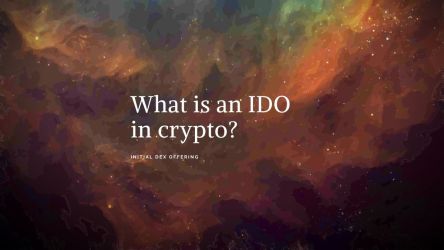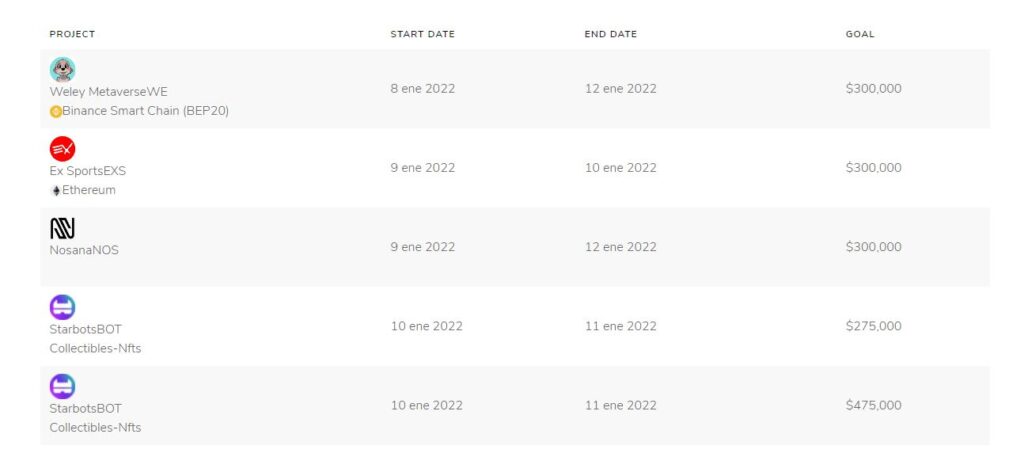
IDO (Initial DEX offering)
An Initial DEX Offering or IDO (Initial DEX Offering) is the start of a decentralized exchange (DEX). In an IDO, a blockchain initiative makes the first public appearance of coins in DEX to collect funds from institutional investors.
IDOs are a type of fundraising in which a project launches a cryptocurrency or token on a decentralized exchange (DEX). It is intended to raise funds and money to start a project and allow immediate trading.
What is an IDO in crypto?
When a project releases a token through a decentralized liquidity market, this is known as IDO. In the digital age, everything from bitcoin to art to a music CD can be represented by an IDO. Integrated Development Organizations (IDOs) provide companies with an effective tool to engage their communities in an economy that improves their goods and services while enabling them to make sound business decisions about their assets.
Investors in early dex offerings do not get any shares in the company, unlike investors in an initial public offering. The projects that make the first DEX offerings obtain financing from individual investors in the same way that conventional companies receive venture cash before starting.
IDO list – Initial DEX Offerings
IDO F.A.Q.
An IDO is a form of collecting funds from which the IDO is issued through a decentralized liquidity exchange. Decentralized cash exchange is a form of crypto-asset exchange based on liquidity pools that can be used by traders to swap tokens. Dependent on market conditions, traders will swap between crypto-assets and stable coins.
The operation of an IDO is very simple.
1. A project raises funds from the general public by using a platform or launch pad that provides IDO services, such as Uniswap, Binance DEX, and Polkastarter .
2. If the project meets the platform criteria, it is chosen for an IDO.
3. Investors then buy the token notes or notes. A promissory note is essentially a formal acknowledgment of the obligation that the company now has to those investors. In other words, the tokens are paid in advance and those who do will get them at the launch event.
4. The currency is instantly listed on a decentralized exchange once the stages are over. Because many projects are being built on Ethereum, most of the tokens are based on the ERC20 standard.
IDOs offer a number of advantages over ICOs and IEOs, which may make them more appealing than the former. These advantages include instant liquidity, immediate trading, and reduced listing fees.
An alternative method to token sale and listing that is much more cost-effective may be provided by IDOs. The primary advantage of utilizing an IDO is that it provides rapid liquidity with minimal to no slippage through the different liquidity pools available via a depository exchange. It charges less for listing than other alternatives. Additionally, it allows quick trade, comparable to IEOs (Initial Exchange Offerings).
– Scams thrive in an obfuscated vetting process.
In addition to the first benefit, the strong demand for IDOs enables scammers to establish esoteric projects and have them bootstrapped very fast.
– Criteria for Expensive Participation
Despite the fact that most platforms offer a public round in which anybody may join, the chances of obtaining an allocation are virtually non-existent due to the fierce competition. This is why, in order to make a significant investment and get a reasonable return, users must possess a big number of launchpad tokens.
-Inequity between seed, private, and public investors
The bulk of tokens will be kept by most IDOs for the team and seed/private round investors. As previously stated, vesting over time helps to avoid a token price discovery dump. However, once the vesting schedule’s unlocking dates are reached, huge profit-taking is nearly invariably the outcome. Investors may readily observe when such an occurrence occurs by following smart contracts (usually once a week, once a month, or once a quarter).
Binance DEX, Polkastarter, and Uniswap are all examples of DEXs that provide IDO services. Additionally, most traders prefer IDOs to ICOs since IDO listings prohibit the token issuer from managing the fundraising round. RAVEN was one of the first IDOs to be launched in the space, having been listed on Binance DEX in June 2019.
As part of an IDO, a blockchain project makes a coin’s initial public launch on a decentralized exchange (DEX) in order to attract funds from retail investors. IDOs are comparable to initial exchange offers (IEOs), in which crypto companies debut their token and solicit money via a controlled exchange, in that both allow for instant trade-in addition to fundraising. Centralized exchanges, on the other hand, enforce stringent ground rules, including the following:
– Payment of a large amount or the exchange of a part of the tokens;
– Interfering with the project’s ability to list its token on rival exchanges;
– Having relatively little influence over the terms of a project’s token sale.
Latest Content
- Crypto Market Update: April 25, 2024
- Renzo’s Restaked ETH Depegs to $700: DeFi Platforms Gearbox and Morpho Face Liquidations
- Crypto Market Update: Insights and Trends for April 23, 2024
- On April 24, the $RTF Token from Oleksandr Usyk’s READY TO FIGHT Project Will be Listed on WhiteBIT
- Crypto Market Update: Key Trends and Insights for April 22, 2024
Related content
- Non-Fungible Tokens: The Guide Non-fungible tokens (NFTs) are a new type of token which is represented by unique cryptographic units, meaning that each token has a unique value. ...
- Crypto Events Archive A growing list of past crypto and blockchain events from around the world. Conferences, workshops, meetups, hackathons, conferences....
- Gate.io Launches a Startup Incubator to Support Early Stage Blockchain Projects Digital asset exchange platform, Gate.io has launched a start-up accelerator, Gate.io Labs, to support talented entrepreneurs with disruptive ideas and the drive to take their projects to the next level. Gate.io Labs aims to provide entrepreneurs (developers, researchers, founders) with industry support,...
- Principal Analyst PrimeXBT: Sharing Economy Tokens Could Be The Next Generators Of Wealth The month of March saw significant price increases on tokens native from shared economy projects, especially those for cloud storage and file-sharing. Tokens like ANKR and STORJ made triple-digit percentage gains after Coinbase added them, and the same was true...


